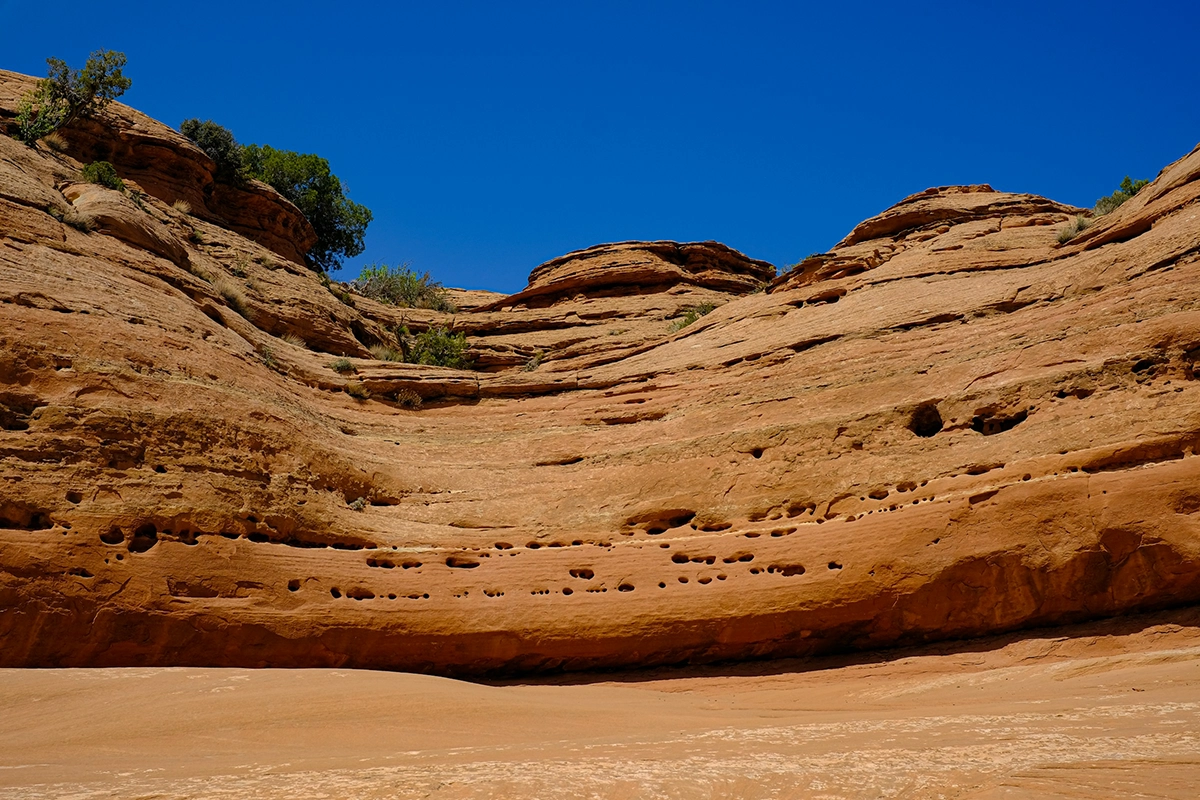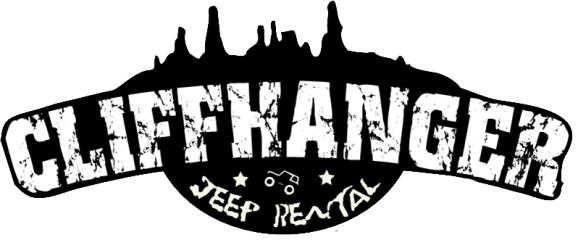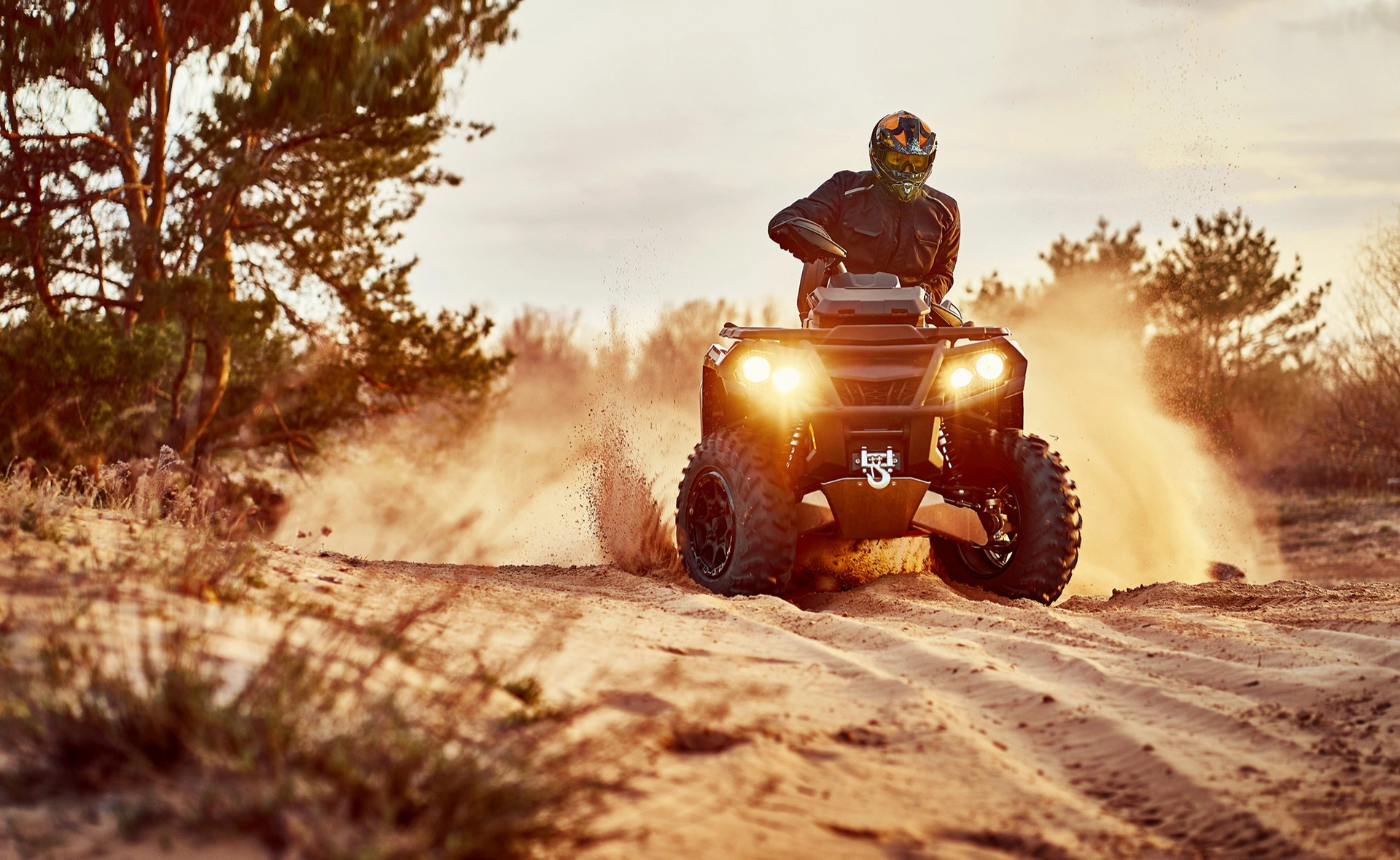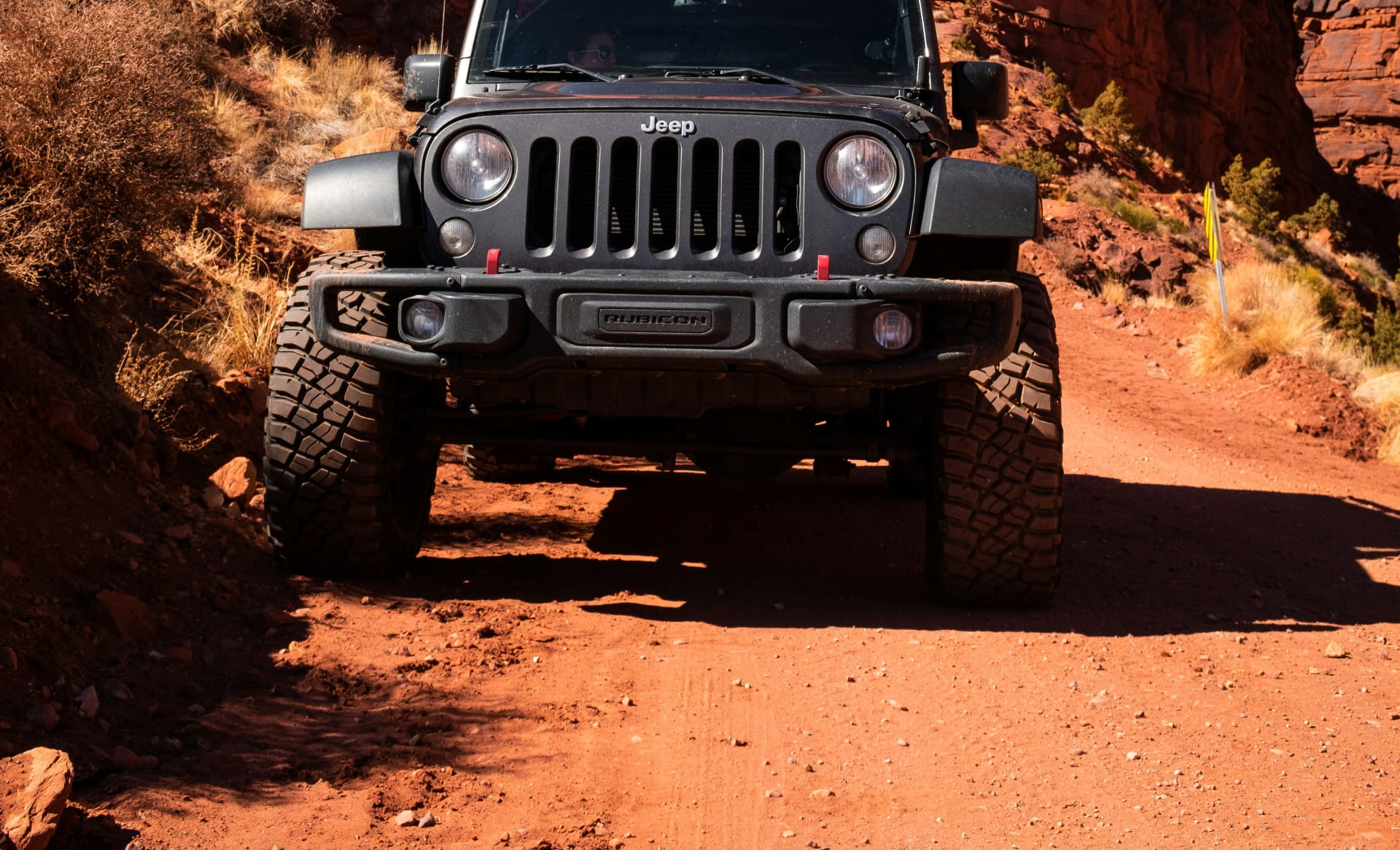Why Moab Defines ATV Adventure in Utah
Utah contains thousands of square miles of public land perfect for ATV riding, but Moab occupies a category entirely its own. The geological accident that created this landscape—layers of ancient sandstone exposed and carved by millions of years of erosion—provides riding surfaces that exist nowhere else on Earth. What started as a small desert town with a few jeep trails has evolved into the global standard by which all other ATV destinations measure themselves, and that didn't happen by accident.
Moab's Unique Geological Advantages
The Entrada and Navajo sandstone formations around Moab create riding surfaces that seem designed specifically for ATVs, though they formed 150 million years before anyone imagined motorized recreation. These ancient sand dunes, compressed into rock and then exposed by erosion, provide natural traction that works with ATV tires in ways that seem almost engineered. The slickrock surfaces offer grip when clean and dry, challenge riders with technical features like natural ramps and ledges, and create an environment where momentum and technique matter more than raw power.
Unlike the loose dirt and gravel that characterize most ATV areas, Moab's rock surfaces provide consistent, predictable traction that allows riders to attempt increasingly challenging lines as their skills develop. The geological variety means you can ride across smooth slickrock domes, through narrow sandstone canyons, and over technical ledges within a single trail system, creating experiences that traditional dirt trails simply cannot match.
The rock formations that make Moab famous aren't just scenic backdrops—they're functional riding surfaces that respond to ATV capabilities in ways that transform mechanical transportation into genuine adventure.
How Slickrock Created the World's Premier Destination
The term "slickrock" misleads newcomers who expect slippery surfaces, but experienced riders understand that clean sandstone provides exceptional traction for properly equipped ATVs. This counterintuitive characteristic allowed Moab to develop a reputation for challenging, technical riding that rewards skill development rather than just speed or power. The natural features—steep climbs, off-camber sections, and exposure that makes mistakes visible—create learning opportunities that build genuine riding competency.
Moab's trail system evolved organically as riders discovered routes that worked with the natural topography rather than fighting against it. The most famous trails follow geological features like joints in the rock, natural terraces, and areas where different rock layers create rideable transitions. This organic development means the trails flow naturally and provide progressive difficulty that allows riders to build skills systematically rather than jumping from easy to impossible with nothing in between.
Slickrock riding in Moab teaches techniques and develops confidence that transfer to all other ATV environments, making it a destination that improves your riding ability rather than just providing temporary entertainment.
What Separates Moab from Other Utah Locations
Other Utah ATV areas offer beautiful scenery and enjoyable riding, but they operate within conventional parameters—dirt trails through forests, desert washes with sand and gravel, or mountain routes with predictable challenges. Moab operates by different rules entirely, where the riding surface itself becomes part of the challenge and the learning experience. The technical demands of slickrock riding develop skills that traditional trail riding never requires, while the unique terrain creates photographic and experiential opportunities unavailable anywhere else.
The difference extends beyond just terrain to include the infrastructure, expertise, and culture that developed around Moab's unique advantages. Local rental companies understand slickrock-specific requirements, guide services know routes that match different skill levels, and the entire tourism ecosystem adapts to accommodate people seeking genuine adventure rather than just scenic drives on ATVs.
Moab doesn't just offer different ATV experiences—it operates in a completely different category that combines technical challenge, scenic beauty, and skill development opportunities that redefine what ATV adventure can actually accomplish.
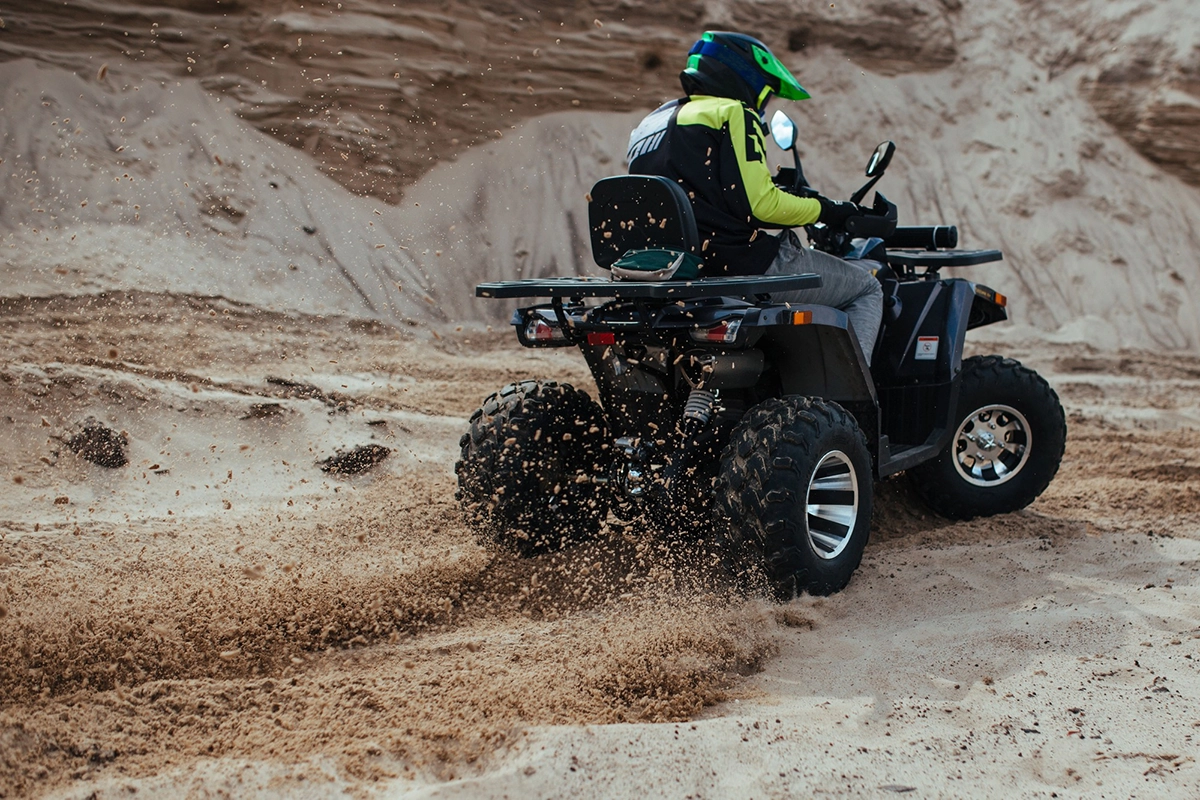
Understanding Moab's ATV Landscape
Moab's ATV terrain operates like a natural progression system that accommodates everyone from nervous first-timers to expert riders seeking challenges that test equipment limits. The landscape provides multiple riding environments within a compact area, allowing groups with mixed skill levels to find appropriate routes while advanced riders can access increasingly technical terrain as their capabilities develop. Understanding these different environments and how they connect helps you choose routes that match your actual abilities rather than your aspirations.
The variety isn't just about difficulty levels—different terrain types teach specific skills and offer unique experiences that combine to create comprehensive understanding of what ATVs can actually accomplish in skilled hands. Each environment rewards different techniques and approaches, building versatility that improves your riding regardless of where you go next.
Slickrock domes: Smooth sandstone surfaces with natural ramps and technical features
Sand washes: Flowing terrain through desert valleys with obstacle variety
Technical trails: Challenging routes requiring precise line selection and advanced technique
Scenic routes: Accessible paths emphasizing views and geological education
Mixed terrain: Combination routes that transition between different surface types
Terrain Variety: Natural Skill Development
Slickrock represents Moab's signature terrain, providing surfaces that challenge balance, traction management, and momentum control in ways that traditional dirt trails never approach. The smooth sandstone creates environments where subtle weight shifts and throttle control determine success or failure, teaching finesse that makes riders more capable on any surface. Advanced slickrock routes include steep climbs, off-camber sections, and exposure that demands confidence and technique rather than just aggressive riding.
Sand washes offer different challenges through flowing terrain that emphasizes reading ahead, maintaining momentum through varying conditions, and adapting to surface changes that happen quickly. These routes teach adaptation skills and provide opportunities to practice techniques learned on slickrock in more forgiving environments where mistakes don't carry the same consequences.
Moab's terrain variety functions like a natural curriculum that builds specific skills progressively, creating riders who understand their machines and themselves better than single-environment experiences can develop.
Skill Level Accommodation: Progressive Challenge System
Beginner routes around Moab focus on building confidence through manageable challenges that introduce slickrock characteristics without overwhelming new riders. Trails like portions of the Klondike Bluffs area provide gentle introduction to unique traction characteristics while maintaining escape routes and margin for error that allows learning without dangerous consequences.
Intermediate trails step up difficulty through sustained technical sections, moderate exposure, and obstacles requiring specific techniques rather than just courage. Routes like Hell's Revenge offer challenging sections with bypass options, allowing riders to choose their commitment level while building skills progressively.
Beginner considerations: Gentle slickrock introduction with escape routes and margin for error
Intermediate progression: Sustained technical sections with manageable consequences
Advanced requirements: Expert-only terrain demanding refined technique and risk acceptance
Group accommodation: Trails offering multiple difficulty options within same route system
Seasonal Considerations: Timing Your Adventure
Spring conditions (March-May) provide ideal temperatures and stable weather patterns that maximize riding comfort and safety margins. Cool mornings allow for early starts without heat-related stress, while longer days provide adequate time for completing longer routes without rushing through technical sections.
Fall seasons (September-November) offer similar advantages with the added benefit of fewer crowds on popular trails. These periods avoid the extreme heat that makes summer riding dangerous and the unpredictable conditions that can make winter attempts problematic.
Spring advantages: Moderate temperatures, stable weather, longer daylight hours
Summer challenges: Extreme heat requiring early starts and increased water needs
Fall benefits: Comfortable temperatures, reduced crowds, stable conditions
Winter limitations: Unpredictable weather, shorter days, potential ice on slickrock surfaces
Access and Regulations: Responsible Recreation
Bureau of Land Management (BLM) lands around Moab provide the legal framework for ATV access, with specific designations that determine where motorized recreation is permitted. Understanding these boundaries prevents violations that result in expensive fines and helps preserve access for future users through responsible recreation practices.
Trail etiquette extends beyond legal requirements to include practices that maintain positive relationships with other user groups and land management agencies. Staying on designated routes, packing out all trash, and respecting wildlife and cultural sites demonstrates the responsible recreation that keeps trails open.
BLM regulations: Designated routes only, proper registration and permits required
Trail etiquette: Stay on marked routes, yield to hikers and horses, pack out trash
Group guidelines: Reasonable group sizes, appropriate spacing, communication protocols
Environmental responsibility: Minimize impact, respect wildlife, protect cultural sites
The Bottom Line: Moab's ATV landscape rewards riders who approach it with respect for both the terrain's capabilities and the regulations that maintain access—understanding both the opportunities and responsibilities creates experiences that justify the effort required to reach this remarkable riding environment.
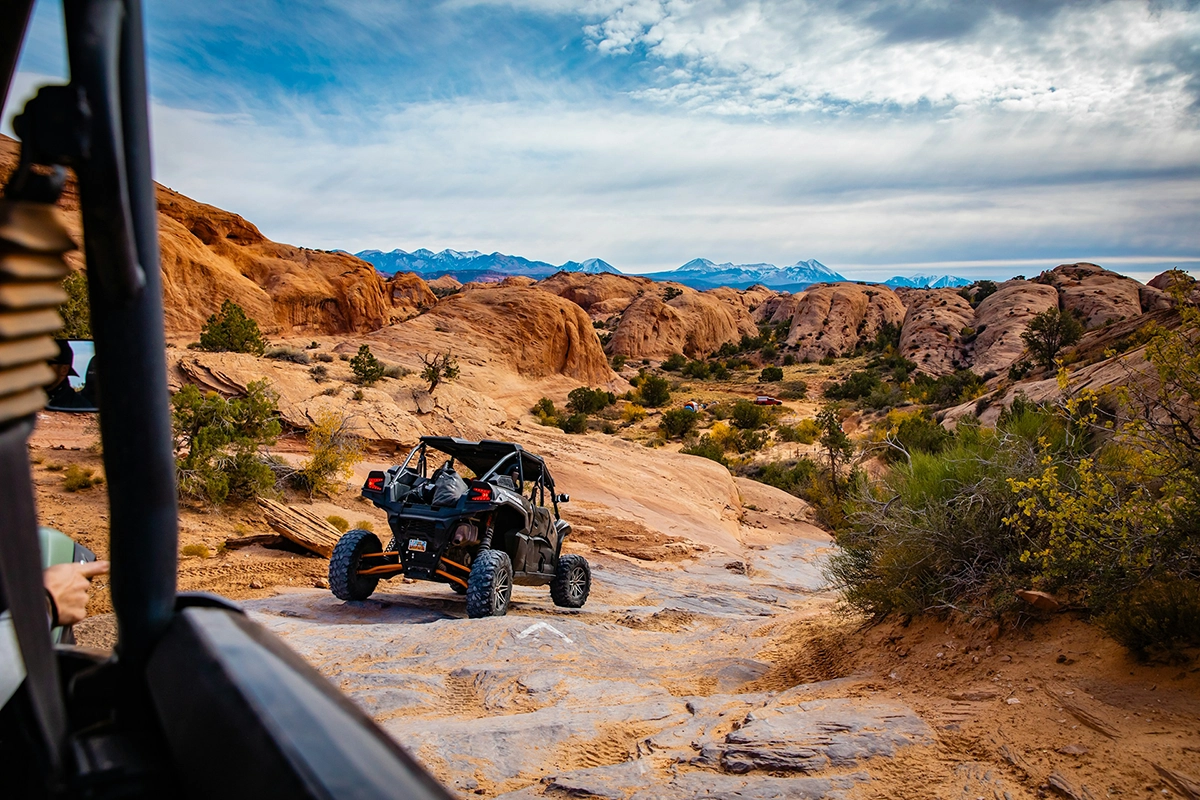
ATV vs. UTV: Choosing Your Machine
Understanding the fundamental differences between traditional ATVs and side-by-side UTVs helps you select the machine that matches your riding style, group composition, and the specific challenges you want to tackle in Moab's diverse terrain. While both vehicles offer access to the same trail systems, they provide distinctly different experiences that appeal to different priorities and skill development goals. The choice affects everything from the technical lines you can attempt to the social dynamics of your riding group.
Each machine type evolved to solve specific problems and excel in particular situations, creating trade-offs that become apparent when you match vehicle capabilities to terrain demands and personal preferences. Making the right choice enhances your entire Moab experience rather than just providing transportation.
Traditional ATVs excel in technical terrain requiring precise maneuvering and individual skill development
Side-by-side UTVs prioritize comfort, safety, and shared experiences over pure technical capability
Terrain demands often determine the optimal choice regardless of personal preferences
Group dynamics and experience levels influence vehicle selection for successful adventures
Traditional ATVs: Precision and Performance
Traditional ATVs offer unmatched agility in technical terrain where precise weight distribution, subtle steering inputs, and individual rider skill determine success on challenging lines. The direct connection between rider and machine creates feedback that teaches balance, traction management, and momentum control in ways that more insulated vehicles cannot match. Advanced riders appreciate how ATVs respond immediately to weight shifts and throttle adjustments that allow navigation through tight spaces and over obstacles that challenge larger machines.
The compact dimensions and low center of gravity give traditional ATVs advantages on steep climbs, narrow passages, and technical lines where larger vehicles simply cannot fit or maintain stability. Single-rider configuration eliminates the compromises that passenger accommodation requires, allowing pure focus on machine control and route selection without concerns about passenger comfort or safety.
Technical superiority: Superior maneuverability in challenging terrain and tight spaces
Skill development: Direct feedback that improves rider technique and machine understanding
Performance advantages: Lower center of gravity and precise control for advanced lines
Individual focus: Undiluted concentration on riding technique without passenger considerations
Remember: Traditional ATVs provide the purest connection between rider skill and terrain mastery, making them the preferred choice for serious enthusiasts who want to develop technical riding capabilities that transfer to all off-road environments.
Side-by-Side UTVs: Comfort and Accessibility
Side-by-side UTVs excel in situations where comfort, safety, and shared experiences take priority over pure technical performance. The enclosed cab design with roll cage protection, seat belts, and steering wheel control creates a more familiar and less intimidating environment for inexperienced riders or those concerned about exposure and safety margins. Passenger seating allows couples and families to share adventures together rather than requiring separate machines and the coordination challenges that multiple ATVs create.
The larger size and increased stability make UTVs more forgiving of technique errors while providing storage space for supplies, cameras, and comfort items that enhance longer adventures. Climate protection and ergonomic seating reduce fatigue during extended rides, allowing focus on scenery and experience rather than physical endurance and machine control.
Safety advantages: Roll cage protection, seat belts, and enclosed design for security
Shared experiences: Passenger seating for couples, families, or mixed-skill groups
Comfort features: Weather protection, ergonomic seating, storage space for supplies
Forgiveness factor: Stability and size that compensate for limited riding experience
Performance Differences: Terrain-Specific Advantages
Slickrock terrain favors traditional ATVs through their superior weight distribution and maneuverability that allows riders to follow natural rock features and attempt challenging lines that larger machines cannot access. The direct steering and immediate throttle response help riders maintain traction on steep climbs and navigate narrow passages between rock formations that define Moab's most technical routes.
Sand wash terrain accommodates both machine types effectively, though UTVs provide comfort advantages during longer rides while ATVs offer superior handling in technical sections where precise line selection matters more than straight-line stability. Mixed terrain routes that combine different surface types tend to favor ATVs for their adaptability and technical capability.
Remember: Traditional ATVs deliver superior performance in the technical slickrock terrain that makes Moab famous, providing access to challenging lines and advanced riding experiences that showcase both machine capability and rider skill development.
Family Considerations: Building Adventures Together
Age and licensing requirements affect vehicle choice for families with younger riders who want to participate in Moab adventures. Traditional ATVs accommodate supervised younger riders who meet minimum age requirements while developing individual riding skills that build confidence and capability over time. The progression from passenger to operator happens naturally as skills and maturity develop.
Multi-generational groups often benefit from mixing vehicle types, with experienced riders choosing ATVs for technical capability while family members who prioritize comfort and safety select UTVs. This approach accommodates different priorities and skill levels within the same adventure while maintaining group cohesion on appropriate trail selections.
Remember: Traditional ATVs provide the foundation for developing genuine off-road riding skills that grow with young riders, creating capabilities and confidence that enhance outdoor adventures for years to come while building family traditions around shared technical challenges.
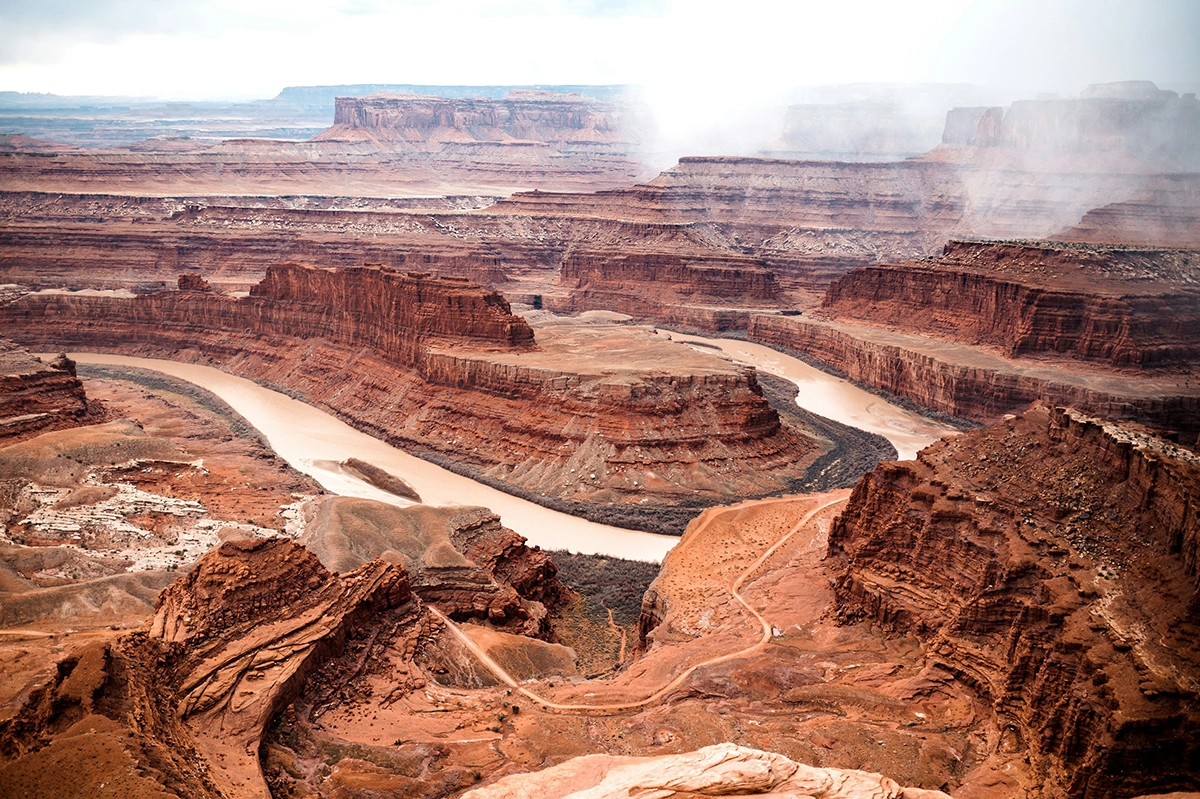
Top ATV Trail Destinations Around Moab
Moab's trail system offers a progression of challenges that build skills systematically while providing access to some of the most photogenic and geologically interesting terrain accessible by ATV. Each major trail area develops different aspects of riding technique while showcasing unique formations and perspectives that justify the effort required to reach them. Understanding what each destination offers helps you select routes that match your current abilities while building toward more advanced challenges.
The beauty of Moab's trail network lies in how different areas complement each other, creating opportunities for multi-day adventures that explore various terrain types and difficulty levels without repetitive experiences. Traditional ATVs excel on all these routes, providing the agility and technical capability that allows riders to fully experience what makes each destination special.
Hell's Revenge provides the classic Moab slickrock experience that defines technical ATV riding
Fins and Things combines moderate technical challenges with spectacular geological formations
Klondike Bluffs offers advanced terrain away from crowds for experienced riders
Gemini Bridges delivers accessible adventure with iconic natural bridge destinations
Behind the Rocks creates a network of interconnected routes for all skill levels
Bartlett Wash blends sand and slickrock for varied terrain experiences
Hell's Revenge: The Foundation of Moab's Reputation
Hell's Revenge established Moab as the world's premier destination for technical ATV riding through 6.5 miles of slickrock terrain that challenges every aspect of machine control and rider technique. The trail follows natural sandstone formations that create obstacles requiring momentum management, precise line selection, and comfort with exposure that separates recreational riders from those seeking genuine technical development. Traditional ATVs shine on Hell's Revenge because their agility allows riders to follow the subtle contours and natural features that make challenging lines possible.
The route includes optional challenging sections that let riders choose their commitment level while building confidence on mandatory obstacles that teach fundamental slickrock techniques. Each section builds on previous skills while introducing new challenges that develop the complete skill set required for advanced Moab riding. The trail's reputation stems from its ability to humble overconfident riders while rewarding those who approach it with appropriate preparation and respect for the terrain.
Fins and Things: Technical Beauty
Fins and Things provides the perfect balance between technical challenge and scenic reward, combining moderate slickrock obstacles with access to some of Moab's most impressive sandstone formations. The trail's technical sections teach precise wheel placement and momentum control while the geological features provide educational opportunities about the forces that created this remarkable landscape. Traditional ATVs handle the technical sections with superior maneuverability while allowing riders to approach the famous fins and natural sculptures for close examination.
The route progression builds skills systematically through increasingly challenging obstacles that prepare riders for more advanced terrain while maintaining scenic interest that keeps the experience engaging for passengers and less technical riders. The combination of rideable challenges and spectacular formations makes Fins and Things an ideal destination for mixed-skill groups where advanced riders want technical challenge while others prioritize scenic beauty.
Klondike Bluffs: Advanced Terrain Away from Crowds
Klondike Bluffs offers some of Moab's most challenging ATV terrain in a setting that provides solitude and pristine conditions away from the crowds that populate more famous trails. The area features technical slickrock sections, challenging climbs, and exposure that demands advanced riding skills while rewarding successful navigation with access to formations and viewpoints unavailable to casual visitors. Traditional ATVs excel in this environment where technical capability and rider skill determine access to the most rewarding destinations.
The advanced nature of Klondike Bluffs creates a natural filter that maintains the area's pristine character while providing experienced riders with challenges that test their limits in stunning surroundings. The trails require route-finding skills and comfort with commitment moves that represent the pinnacle of recreational ATV riding, making successful completion a legitimate achievement among serious enthusiasts.
Gemini Bridges: Accessible Natural Wonders
Gemini Bridges provides access to spectacular natural bridge formations through moderate terrain that accommodates a wide range of riding abilities while maintaining the scenic rewards that make Moab famous. The trail combines gentle slickrock introduction with sand wash sections that teach different riding techniques while building toward the dramatic natural bridges that serve as the destination goal. Traditional ATVs handle the varied terrain efficiently while providing the maneuverability needed for optimal positioning at scenic viewpoints.
The accessible nature of Gemini Bridges makes it ideal for building confidence and introducing new riders to Moab's unique terrain characteristics while experienced riders appreciate the geological education and photographic opportunities that the destination provides. The trail demonstrates that Moab adventures don't require extreme technical difficulty to provide memorable experiences and genuine appreciation for the forces that created this remarkable landscape.
Behind the Rocks: Progressive Skill Development
Behind the Rocks encompasses a network of interconnected trails that provide progression from beginner-friendly introduction routes to advanced challenges that test expert-level skills within a single trail system. The area's layout allows riders to build skills systematically while exploring different terrain types and technical challenges that develop comprehensive ATV capabilities. Traditional ATVs excel throughout the Behind the Rocks system because their versatility adapts to the varied demands of different trail sections.
The interconnected nature creates opportunities for customized adventures that match group abilities and time constraints while maintaining access to increasingly challenging terrain as skills develop. Advanced riders appreciate the technical sections that demand refined technique while beginners benefit from gentle introduction areas that build confidence without overwhelming challenges.
Bartlett Wash: Sand and Slickrock Combination
Bartlett Wash provides unique riding experiences through terrain that combines flowing sand wash sections with technical slickrock challenges, teaching riders to adapt techniques quickly as surface conditions change. The varied terrain develops versatility and adaptation skills while showcasing different aspects of Moab's geological diversity within a single adventure. Traditional ATVs handle the transition between sand and rock surfaces effectively while maintaining the technical capability needed for challenging slickrock sections.
The combination terrain teaches important lessons about reading surfaces, adjusting riding technique, and maintaining momentum through varying conditions that improve overall riding ability regardless of future destinations. The diversity within Bartlett Wash creates comprehensive learning experiences that develop skills applicable to all ATV environments while maintaining the unique character that makes Moab riding special.
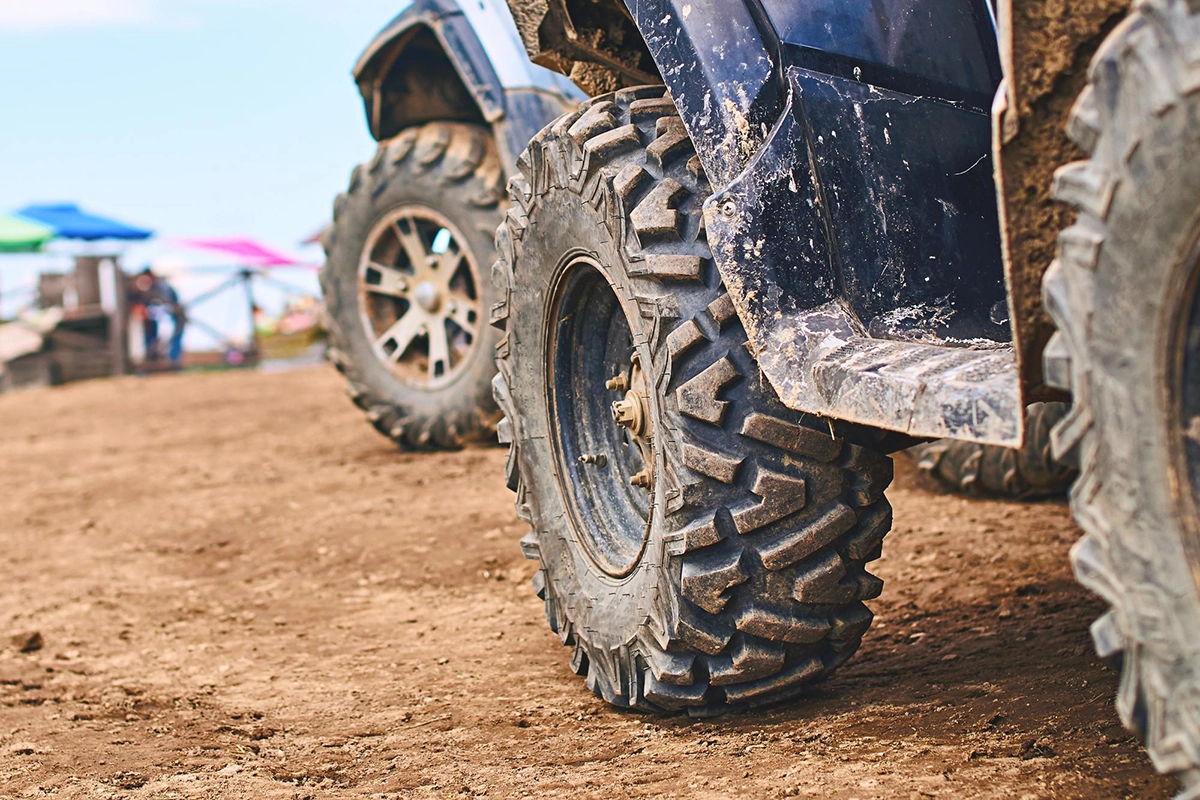
Cliffhanger ATV Rentals: The Moab Advantage
Cliffhanger ATV Rentals operates from the understanding that Moab's demanding terrain requires purpose-built machines, local expertise, and comprehensive support systems that recreational rental companies simply cannot provide. Our approach eliminates the guesswork and potential problems that come with generic ATV rentals by focusing specifically on what works in Moab's unique slickrock environment. The difference becomes apparent when you're attempting technical obstacles where equipment reliability and local knowledge determine success or expensive failure.
After decades of operating in Moab's challenging conditions, we've developed rental practices and vehicle specifications that address the real demands of technical ATV riding rather than just providing transportation with off-road capabilities. This specialized focus creates rental experiences that enhance your adventure rather than limiting it through inadequate preparation or equipment compromises.
Purpose-built fleet specifically modified for Moab's slickrock and technical terrain demands
Local expertise from staff who ride these trails regularly and understand current conditions
Comprehensive safety equipment included with every rental for peace of mind
Professional maintenance standards that prevent mechanical failures in remote locations
Full insurance coverage designed specifically for off-road rental situations
Fleet Specifications: Purpose-Built for Moab Conditions
Our ATV fleet consists of machines selected and modified specifically for Moab's slickrock terrain, with upgrades that address the unique demands of technical desert riding. Each ATV receives modifications that improve ground clearance, enhance suspension articulation, and provide the tire compounds that work effectively on sandstone surfaces. Unlike generic rental fleets designed for multiple environments, our machines excel in the specific conditions that define Moab's most rewarding trails.
The fleet specifications reflect real-world testing on routes like Hell's Revenge and Poison Spider Mesa, with component selections proven through thousands of miles of technical terrain rather than theoretical capabilities. Vehicle preparation includes protective modifications that prevent damage from inevitable rock contact while maintaining the agility and responsiveness that make ATVs superior to larger machines on technical lines.
Specialized tire compounds designed for optimal grip on clean slickrock surfaces
Enhanced suspension systems providing superior articulation for technical obstacles
Protective modifications including skid plates and brush guards for rock contact
Performance modifications optimized for Moab's elevation and terrain demands
Local Expertise: Route Knowledge That Prevents Problems
Our staff lives and rides in Moab year-round, developing intimate knowledge of trail conditions, seasonal variations, and route recommendations that guidebooks and casual visitors cannot provide. This expertise includes understanding which trails match different skill levels, where alternative lines exist for challenging obstacles, and how recent weather affects grip characteristics and safety margins on specific routes.
The local knowledge extends to vehicle matching services that pair customer experience levels with appropriate ATV capabilities and trail recommendations. This approach prevents the expensive mistakes and dangerous situations that result from overestimating abilities or underestimating the technical demands of advanced terrain.
Current trail condition updates based on recent riding experience and weather impacts
Route recommendations customized to match actual riding skills rather than aspirational goals
Alternative line suggestions for challenging obstacles based on vehicle and rider capabilities
Seasonal timing advice for optimal conditions and reduced crowding on popular trails
Safety Equipment and Professional Standards
Every Cliffhanger ATV rental includes comprehensive safety equipment that meets professional standards rather than minimum legal requirements. Safety gear selection reflects the specific demands of desert riding, including protection from sun exposure, communication devices for remote areas, and emergency supplies designed for the challenges that technical terrain presents.
Our maintenance standards address the accelerated wear that Moab's abrasive terrain creates, with inspection schedules and component replacements that prevent mechanical failures during remote adventures. Professional maintenance protocols ensure that each ATV performs reliably when technical challenges demand precise machine control and consistent power delivery.
The combination of proper safety equipment and reliable mechanical condition creates rental experiences where customers can focus on skill development and scenic enjoyment rather than worrying about equipment adequacy or emergency preparedness. This professional approach to safety and maintenance reflects our commitment to successful adventures rather than just equipment access.
Cliffhanger ATV Rentals provides the specialized equipment, local expertise, and professional support that transforms challenging Moab terrain into achievable adventures—our purpose-built approach ensures that your ATV rental enhances your experience rather than limiting it through inadequate preparation or generic equipment compromises.
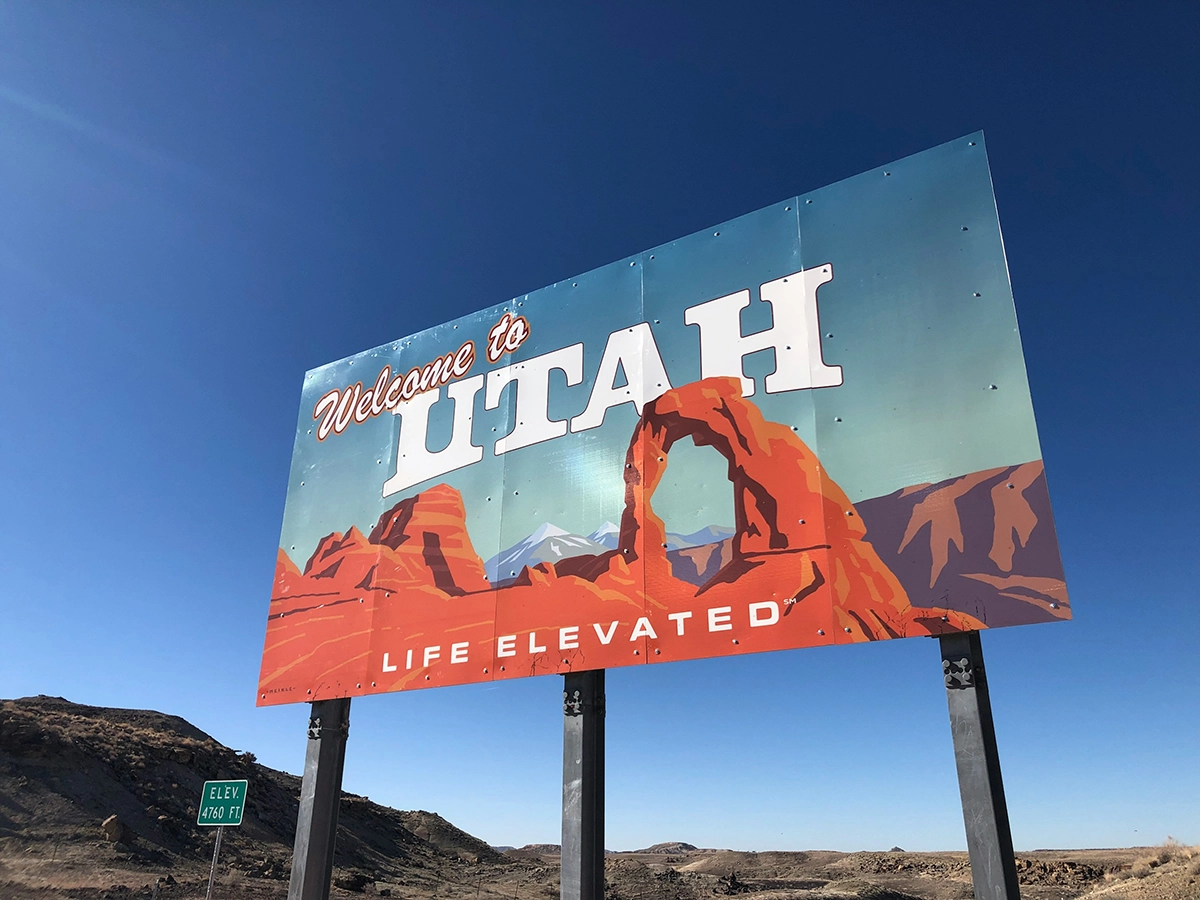
Skill Development and Safety Considerations
ATV riding in Moab demands progressive skill development because the terrain punishes overconfidence while rewarding methodical preparation and technique refinement. Unlike recreational riding where mistakes result in minor embarrassment, Moab's slickrock and technical obstacles create situations where poor judgment leads to expensive equipment damage, dangerous recovery scenarios, or worse. Understanding this reality shapes how successful riders approach skill building—treating it as an ongoing process rather than a weekend hobby that translates automatically to expert terrain.
Pro Tips for Systematic Skill Building: Start each riding day with easier terrain to assess current conditions and machine performance before attempting challenging sections. Practice fundamental techniques like weight distribution and throttle control on forgiving surfaces where mistakes don't carry serious consequences. Build confidence through repetition on appropriate obstacles rather than jumping to advanced terrain based on optimistic self-assessment.
Beginner Progression: Building Real Confidence
Beginner ATV riders in Moab benefit from understanding that confidence built on inappropriate terrain creates dangerous overconfidence when real challenges appear. True skill development starts with mastering basic machine control on gentle slickrock surfaces where the unique traction characteristics become familiar without overwhelming technical demands. Routes like portions of the Behind the Rocks system provide ideal learning environments with natural progression from simple obstacles to moderate challenges.
Effective beginner progression focuses on developing feel for how ATVs respond to slickrock surfaces, learning to read terrain for safe vs. risky lines, and building the physical conditioning that technical riding demands. The goal isn't completing difficult trails quickly—it's developing fundamental skills that create genuine capability rather than false confidence based on luck or determination alone.
Master basic throttle control and weight distribution on gentle slickrock surfaces first
Learn to identify safe lines and potential hazards before attempting challenging obstacles
Develop physical conditioning for sustained technical riding through progressive challenges
Practice basic recovery techniques in controlled situations before remote trail attempts
Advanced Techniques: Reading Terrain and Managing Momentum
Advanced ATV techniques in Moab center on reading slickrock surfaces for grip characteristics, fracture patterns, and natural features that determine successful line selection. Experienced riders develop the ability to assess rock surfaces visually, identifying areas where iron oxide staining indicates good traction versus fresh fractures or loose material that presents hazards. This visual assessment combines with understanding how momentum, weight distribution, and machine setup interact to overcome technical obstacles.
Momentum management becomes critical on sustained climbs and technical sections where maintaining forward progress requires balancing speed against traction limits. Advanced riders learn when to commit to challenging lines versus when retreat preserves equipment and safety margins for future attempts.
DOs:
Read rock surfaces for color variations and staining that indicate grip characteristics
Practice momentum management on progressively steeper climbs with safe runout areas
Develop weight shift techniques that maximize traction during technical maneuvers
Learn to identify natural rock features that provide structural support for challenging lines
DONTs:
Attempt advanced lines without understanding escape routes or recovery options
Ignore subtle terrain changes that affect traction and stability during technical sections
Rush through challenging obstacles without proper assessment and line selection
Underestimate how quickly conditions change with weather or surface contamination
Group Riding Dynamics and Communication
Group ATV riding in Moab requires communication protocols and spacing that accommodate the visual and hearing limitations that technical terrain creates. Effective groups establish hand signals, radio procedures, and positioning strategies that maintain safety margins while allowing mutual assistance when obstacles exceed individual capabilities. Understanding how group dynamics affect decision-making prevents the peer pressure situations that lead to attempts beyond actual skill levels.
Successful group riding balances individual skill development with collective safety, creating environments where less experienced riders can learn from advanced techniques without feeling pressured to attempt obstacles beyond their current abilities. This approach requires leadership that prioritizes group safety over individual achievement while maintaining the challenge levels that make Moab riding rewarding.
Group riding success depends on establishing clear communication protocols and maintaining spacing that prevents accidents while allowing mutual support when technical challenges exceed individual capabilities—effective groups prioritize collective safety over individual achievement while preserving the challenge levels that make advanced terrain rewarding.
Environmental Awareness and Emergency Preparedness
Moab's desert environment creates hazards that recreational ATV riders often underestimate, including rapid weather changes, extreme temperature variations, and flash flood potential that can transform safe areas into dangerous traps within minutes. Environmental awareness includes understanding how afternoon thunderstorms affect slickrock grip, how temperature extremes affect both rider performance and equipment reliability, and how limited water availability creates serious consequences for extended adventures.
Emergency preparedness for Moab ATV riding extends beyond basic first aid to include communication devices for areas without cell coverage, navigation backup systems for GPS failures, and self-rescue equipment for situations where outside help isn't readily available. The remote nature of many advanced trails means that minor problems can escalate quickly without proper preparation and equipment redundancy.
Environmental awareness and emergency preparedness for Moab ATV adventures require understanding that desert conditions amplify minor mistakes into serious problems—successful riders prepare for equipment failures, weather changes, and communication challenges that recreational environments rarely present.
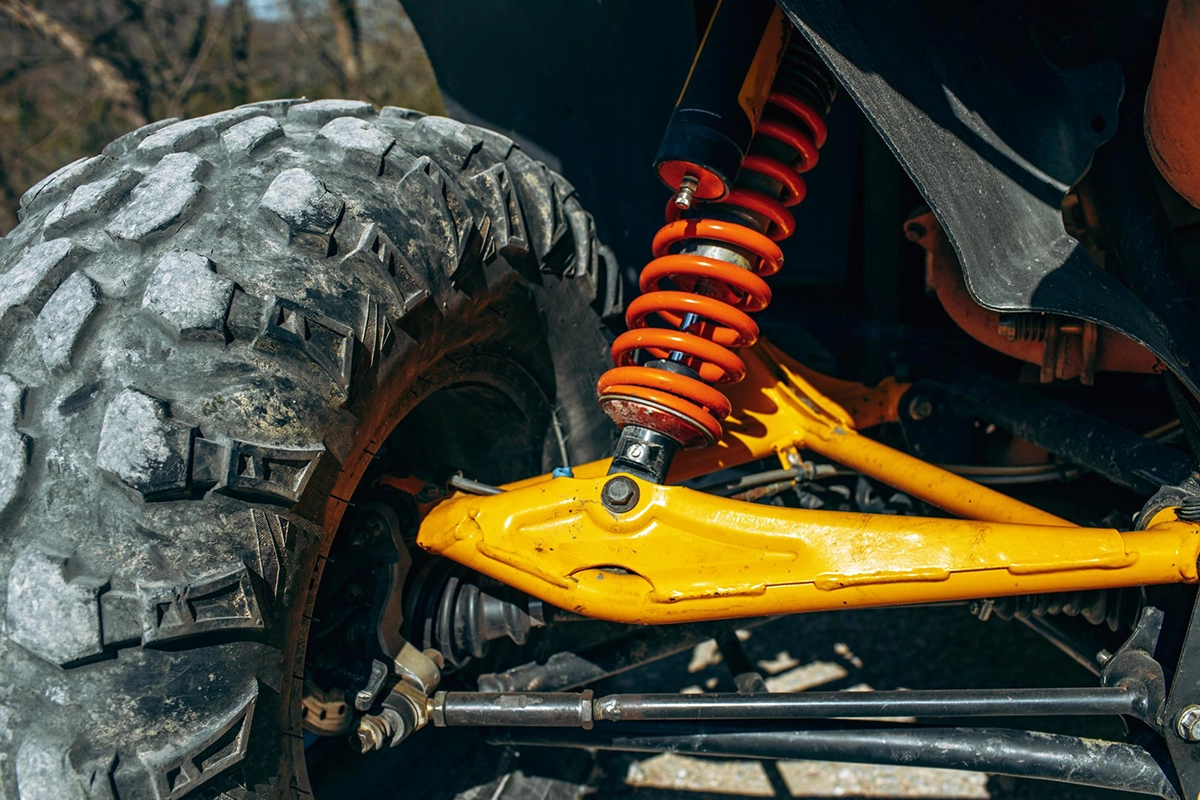
Planning Your ATV Adventure
Successful Moab ATV adventures require matching your trip scope to realistic expectations about time, energy, and skill development rather than optimistically assuming you can pack maximum experiences into minimum timeframes. The terrain's technical demands create natural pacing that can't be rushed, while desert conditions affect both rider performance and equipment reliability in ways that casual planning often overlooks. Understanding these realities helps create adventures that build positive memories rather than exhausting ordeals that discourage future exploration.
Effective planning balances ambition with practical limitations, creating experiences that challenge capabilities while maintaining safety margins and enjoyment levels that justify the effort required to reach Moab's remarkable terrain.
Half-day trips work best for skill assessment and introduction to Moab's unique terrain characteristics
Full-day adventures provide time for progressive challenges and scenic exploration without rushing
Multi-day experiences allow deep exploration of interconnected trail systems and advanced skill development
Group composition affects safety, pacing, and the types of challenges that become appropriate
Physical preparation requirements vary dramatically based on chosen trail difficulty and duration
Trip Duration: Matching Time to Realistic Goals
Half-day ATV rentals provide ideal introduction experiences for riders new to Moab's terrain, allowing time to develop familiarity with slickrock characteristics and machine handling without the fatigue that longer adventures create. These shorter timeframes work well for mixed-skill groups where some members need confidence building before attempting more challenging routes, and they accommodate physical conditioning limitations that full-day technical riding exposes quickly.
Full-day adventures unlock Moab's more rewarding destinations and provide time for progressive skill building that starts with easier terrain and builds toward challenging obstacles as confidence develops. The extended timeframe allows for lunch breaks, photography opportunities, and the pacing that technical terrain demands without creating pressure to rush through obstacles or skip scenic stops that enhance the overall experience.
Group Size: Optimal Team Composition
The ideal ATV group size balances safety benefits with practical limitations that Moab's terrain imposes. Groups of 4-6 riders provide mutual support for recovery situations while maintaining manageable communication and coordination, though successful groups require at least one experienced rider who understands local trail conditions and can make sound decisions about route selection and obstacle attempts.
Larger groups create coordination challenges on technical trails where narrow passages and challenging obstacles require individual attention and careful timing. Smaller groups move more efficiently but sacrifice the safety margins and recovery assistance that multiple machines provide when equipment failures or rider difficulties occur in remote locations.
Optimal size: 4-6 riders for balance of safety support and manageable coordination
Required experience: At least one rider with local trail knowledge and technical skills
Skill distribution: Mix of abilities that allows progression without overwhelming beginners
Equipment redundancy: Multiple machines reduce isolation if individual breakdowns occur
Physical Preparation: Honest Fitness Assessment
Technical ATV riding demands core stability, upper body strength, and cardiovascular endurance that recreational riding rarely develops. Moab's terrain requires sustained physical effort for throttle control, weight distribution, and machine handling that becomes exhausting quickly for unprepared riders, especially during summer heat or on challenging routes that demand precise control over extended periods.
Preparation should include exercises that develop grip strength for extended throttle control, core stability for weight shifting during technical maneuvers, and cardiovascular conditioning that supports sustained concentration and physical effort in desert heat. Understanding your actual fitness level helps determine appropriate trail selections and prevents situations where physical limitations create safety hazards.
Gear: Smart Packing Strategy
Cliffhanger provides essential safety equipment including helmets, protective gear, and basic recovery tools, but personal preparation enhances comfort and safety during extended adventures. Focus on items that address desert-specific challenges like sun protection, hydration management, and communication backup rather than duplicating provided equipment or packing items that desert conditions make impractical.
Smart packing prioritizes lightweight, multi-purpose items that don't interfere with riding while addressing the specific challenges that Moab's environment presents. Avoid overloading yourself with unnecessary gear while ensuring you have backup solutions for communication, navigation, and emergency situations that technical terrain can create.
Photography: Capturing Memories Safely
Moab provides incredible photographic opportunities, but capturing them safely requires planning that considers terrain challenges, group dynamics, and the technical demands of ATV operation. The best photos often come from planned stops at scenic overlooks rather than attempting to shoot while riding, and successful photography requires understanding how group coordination and safety considerations affect timing and positioning.
Effective ATV photography combines scenic planning with safety awareness, using designated stopping points for camera work while maintaining focus on riding technique and group communication during technical sections. The goal is documenting your adventure without compromising the experience or creating safety hazards through distracted riding or poor group coordination.
Think of it this way: successful ATV adventure planning creates frameworks for memorable experiences rather than rigid schedules that fight against terrain realities—the best adventures balance challenge with achievable goals while maintaining the flexibility that allows genuine exploration and skill development within appropriate safety margins.
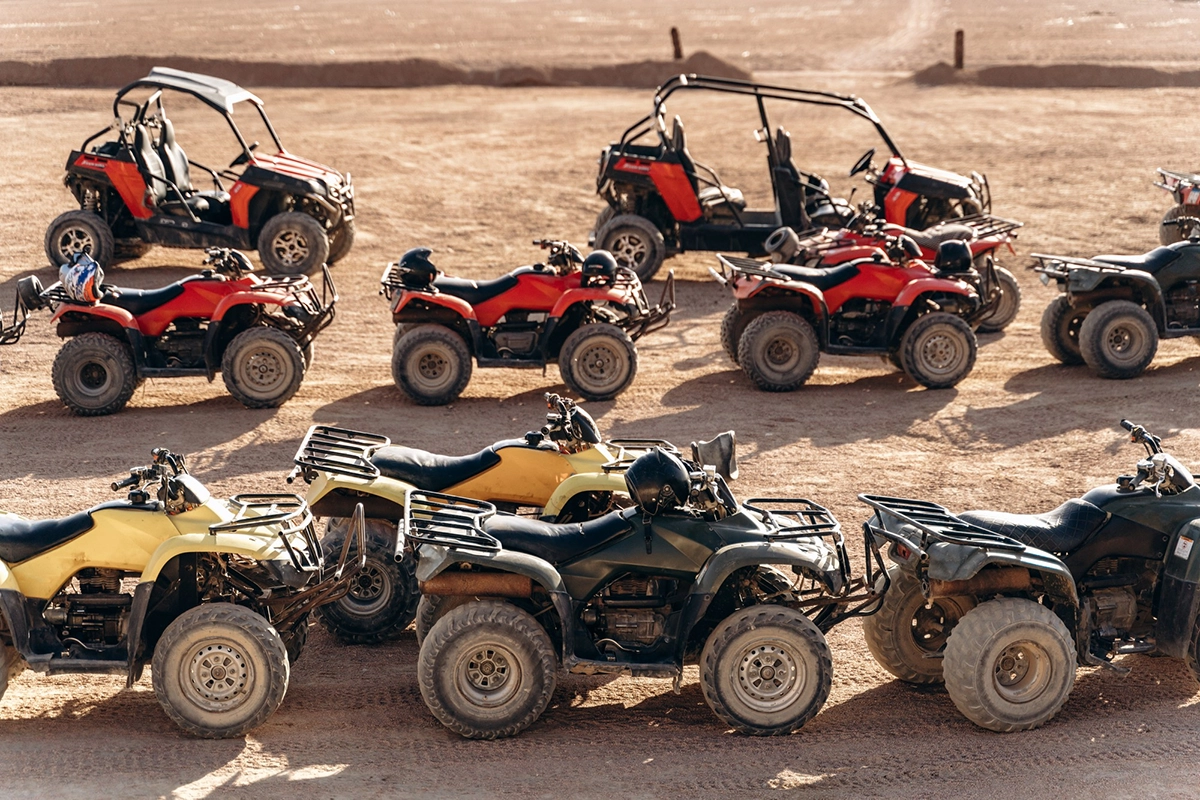
Making the Most of Your Moab ATV Experience
Maximizing your Moab ATV adventure requires approaching it as a learning experience rather than just recreational transportation through scenic terrain. The difference between tourists who ride ATVs and adventurers who truly experience Moab lies in preparation, attitude, and willingness to engage with challenges that develop genuine capabilities. Most visitors underestimate both the learning opportunities and the preparation required to access what makes this destination genuinely special rather than just photographically impressive.
Pre-Trip Preparation: Setting Realistic Expectations
Effective preparation begins with honest assessment of your current ATV skills and physical conditioning rather than optimistic assumptions about what enthusiasm and determination can accomplish on technical terrain. Research trail ratings and difficulty descriptions, but understand that these represent minimum requirements rather than guarantees of success. Moab's unique terrain characteristics mean that experience on other ATV destinations provides limited preparation for slickrock challenges and desert conditions.
Mental preparation proves as important as physical conditioning because Moab's terrain demands decision-making under pressure, comfort with exposure, and acceptance that retreat often demonstrates better judgment than persistence. Understanding that skill development happens gradually prevents the frustration and poor decisions that result from expecting immediate mastery of techniques that experienced riders spend years developing.
Pro Tips for Effective Preparation: Study trail maps and difficulty ratings but expect conditions to vary from descriptions based on weather and seasonal factors. Watch videos of specific trails to understand obstacle types and technical requirements, but avoid forming rigid expectations about how you'll handle specific challenges. Focus preparation on building general fitness and basic ATV handling skills rather than trying to prepare for specific obstacles you haven't experienced.
Local Knowledge Utilization: Professional Expertise
Rental company staff at Cliffhanger possess intimate knowledge of current trail conditions, seasonal variations, and route recommendations that guidebooks and online resources cannot provide. This expertise includes understanding which trails match different skill levels, where alternative lines exist for challenging obstacles, and how recent weather affects safety margins and grip characteristics on specific routes.
Effective utilization of local knowledge requires asking specific questions about your planned routes rather than general inquiries about "good trails." Describe your actual experience level honestly and listen to recommendations that might differ from your initial plans. Local experts can identify progression routes that build skills systematically and suggest timing strategies that optimize conditions for your chosen adventures.
Ask specific questions about planned routes rather than requesting general recommendations
Describe actual experience level honestly to receive appropriate difficulty matching
Listen to alternative suggestions that might differ from initial plans or expectations
Request progression routes that build skills systematically rather than jumping difficulty levels
Weather Adaptation: Flexible Planning Strategies
Moab's weather patterns create daily and seasonal variations that significantly affect both safety and enjoyment on ATV adventures. Summer heat requires early morning starts and increased hydration planning, while afternoon thunderstorms can create dangerous conditions on exposed slickrock surfaces. Spring and fall provide ideal conditions but require flexible scheduling to accommodate changing weather patterns that affect grip and visibility.
Successful weather adaptation means monitoring forecasts actively and maintaining backup plans rather than rigidly adhering to predetermined schedules regardless of conditions. Understanding how different weather affects specific trail characteristics allows for route adjustments that maintain adventure quality while avoiding dangerous situations that poor conditions create.
Skill Building: Progressive Challenge Selection
Effective skill development on Moab terrain requires systematic progression through increasingly challenging obstacles rather than attempting advanced routes based on confidence from easier terrain. Each trail type teaches specific techniques that build toward more demanding challenges, creating natural learning sequences that develop genuine competency rather than false confidence based on luck or determination.
Progressive challenge selection means spending adequate time on foundational skills before advancing to technical terrain that punishes technique deficiencies. This approach requires patience and honest self-assessment but creates capabilities that enhance safety and enjoyment on advanced routes while building confidence through demonstrated competency rather than optimistic assumptions.
Documentation: Capturing Memories Strategically
Effective documentation of Moab ATV adventures requires balancing photographic goals with safety considerations and group dynamics that technical terrain demands. The best photographs often come from planned stops at scenic viewpoints rather than attempting to capture action shots while riding, and successful documentation requires understanding how camera work affects group coordination and safety margins.
Strategic documentation focuses on capturing the experience's emotional and scenic highlights without compromising the adventure through excessive focus on photography over actual engagement with the terrain and challenges. The goal is creating lasting memories through images that support rather than replace genuine participation in the adventure itself.
Bold statement: Making the most of your Moab ATV experience requires treating it as an opportunity for genuine skill development and personal challenge rather than just scenic transportation—the most rewarding adventures combine preparation, flexibility, and progressive challenge selection with documentation strategies that capture memories without compromising the authentic engagement that makes these experiences genuinely transformative.
Your Utah ATV Adventure Starts in Moab
Utah contains thousands of square miles of public land suitable for ATV riding, but Moab occupies a category entirely its own through geological accidents that created terrain found nowhere else on Earth. The combination of accessible technical challenges, year-round riding conditions, and infrastructure developed specifically for off-road recreation creates experiences that redefine what ATV adventure can actually accomplish. Other Utah destinations offer beautiful scenery and enjoyable riding, but they operate within conventional parameters that don't approach the skill development opportunities and genuine adventure that Moab's unique landscape provides.
Key Points That Define Moab's Superiority:
Slickrock terrain that teaches advanced techniques while providing predictable, grippy surfaces
Progressive trail systems that accommodate skill building from beginner to expert levels
Year-round accessibility with optimal conditions during spring and fall seasons
Local expertise and rental infrastructure specifically designed for technical off-road challenges
Geological diversity that creates multiple riding environments within compact geographical areas
Rental Selection: The Foundation of Success
Proper rental selection transforms challenging terrain into achievable adventures through purpose-built equipment, local expertise, and comprehensive support systems that generic rental companies cannot provide. The difference between struggling with inadequate equipment and confidently tackling technical challenges often comes down to choosing rental partners who understand Moab's specific demands rather than treating it as just another ATV destination.
Cliffhanger Jeep Rentals operates from decades of experience with what actually works in Moab's demanding conditions, providing purpose-built ATVs, local route expertise, and professional support that eliminates the guesswork and potential problems that come with generic rental approaches. Our specialized focus on Moab terrain creates rental experiences that enhance your adventure rather than limiting it through inadequate preparation or equipment compromises.
Ready to experience Utah's premier ATV destination with confidence? Contact Cliffhanger Jeep Rentals today and discover why serious off-road enthusiasts choose professional equipment and local expertise for their most important adventures.
Casual Riding vs. Genuine Exploration
The difference between casual ATV riding and genuine off-road exploration becomes apparent when you engage with terrain that demands skill development, environmental awareness, and respect for natural forces that dwarf human capabilities. Casual riding treats ATVs as recreational transportation through scenic areas, while genuine exploration develops relationships with landscapes that continue teaching new lessons about technique, judgment, and personal capabilities each time you return.
Moab rewards riders who approach it as students rather than tourists, offering experiences that build genuine competency while providing access to terrain and perspectives unavailable through any other means. The technical challenges and scenic rewards combine to create adventures that justify the preparation and effort required while developing skills and confidence that enhance all future off-road experiences.
Genuine ATV exploration in Moab transforms recreational riding into skill development and personal challenge that builds lasting capabilities—the terrain demands respect and preparation while rewarding those who meet its challenges with experiences that redefine what adventure can actually accomplish when approached with appropriate commitment and professional support.
